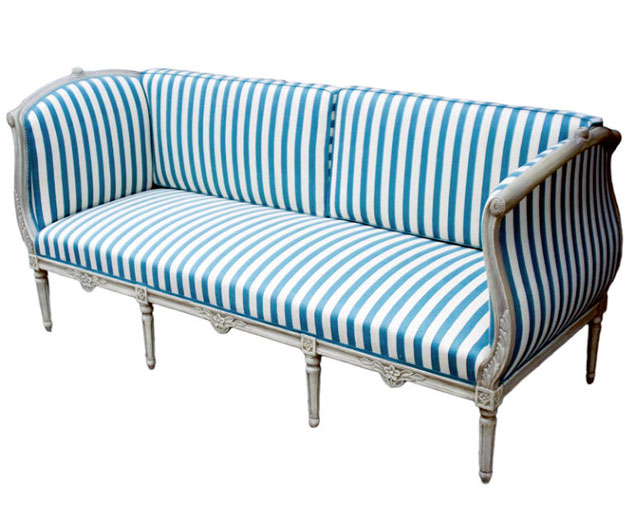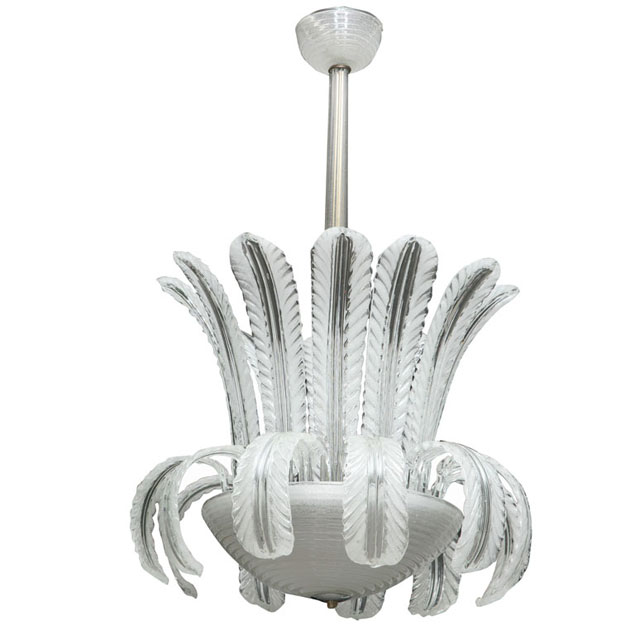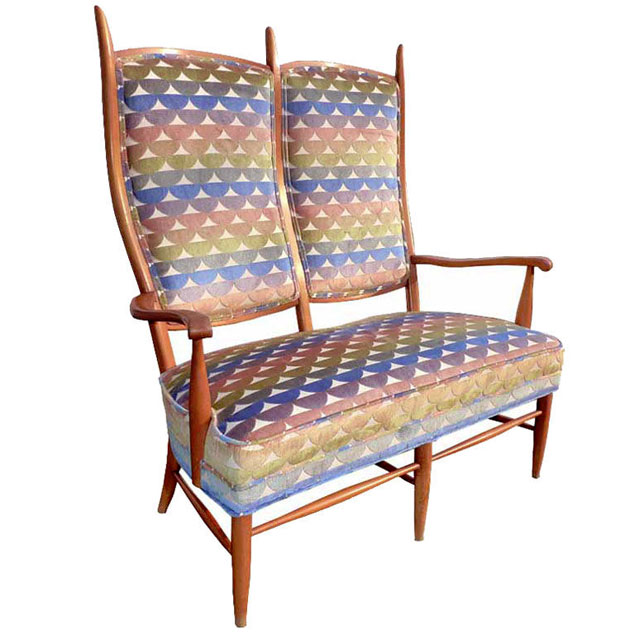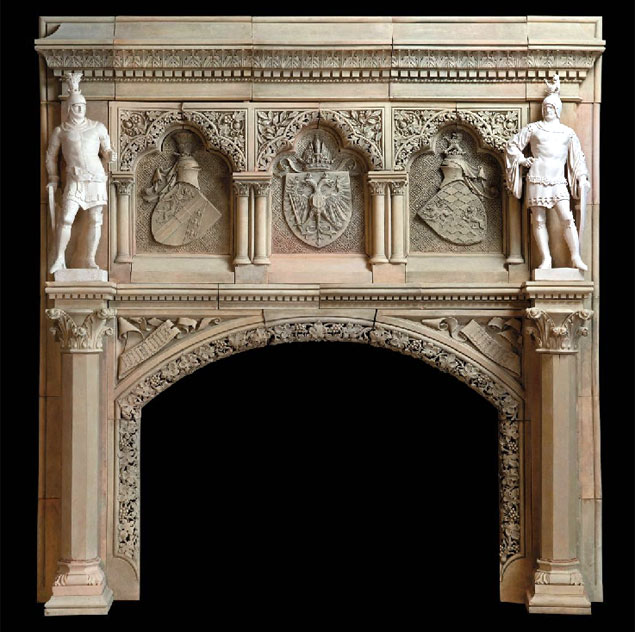With spring just around the corner, I’m feeling the desire to paint my apartment bright colors and pack it with airy, happy furniture like this Swedish banquette in the Gustavian style. Again, this piece has been reupholstered, but I think it has a great look to it, bold without being loud. The Gustavian style is uniquely Swedish, and originates from the period of Gustav III, who served as king in the late 18th Century. Most people would say the style is rooted in the Neo-Classical movement, but it also has a kind of minimalist French Rococo feel to it, which isn’t surprising given the king spent a fair amount of time at Versailles before assuming the throne. This particular piece is circa 1880, so very much toward the tail end of the movement, but aside from IKEA, it’s really the look most furniture-philes associate with the country. Available at David Duncan Antiques in New York.
Art Deco Murano Glass Chandelier
This Murano chandelier has a certain va-va-voom about it, don’t you think? With those long glass feathers it could easily be in a vaudeville show, surrounded by dancing ladies. It would also be rather brilliant in a grand Miami art deco mansion or a sumptuous place in Palm Beach. Murano’s over the top styling isn’t always my cup of tea, they’re fairly loud if you don’t have them in the atrium of a Venetian palace, but I think they’ve made something special with this particular piece. Available through Palm Beach Antique and Design Center.
Prelude and Finale to La Traviata
I enjoy going to the Opera whenever I can – it’s not something I can often afford, but I suppose that keeps it something cherished that always seems to thrill. One particular show that has stuck in my memory more than others is La Traviata, Verdi’s tragic story of two lovers in 18th Century Paris. This Saturday, March 6th, will mark the 157th anniversary of its very first and disastrous performance in Venice. Thankfully Verdi didn’t give up on the show and today it is one of the most well-known and most performed operas throughout the world, with many other works, La Boheme, the film Moulin Rouge, for example, based on the story. That being said, the opera itself is based on a book by Alexander Dumas, La dame aux Camélias.
The opening creeps in, so soft and gentle that most in the audience don’t realize the orchestra has started playing until a few seconds in. It possesses a certain musical theme that isn’t as prevalent in other shows, which is perhaps why this one is so popular, you find yourself actually humming along walking out of the theater.
The ending, of course, is quite sad, but offers one of the greatest moments in opera. Just as Alfredo returns to Violetta to reconcile, their world collapses. Violetta is dying of tuberculosis and near the end, with only moments to live. Suddenly, however, as Alfredo returns and they embrace she begins to feel a remarkable recovery, warming up and regaining her strength. But it is only her body’s last gasp and in a tear-jerking twist she finally collapses in death into Alfredo’s arms as he looks on, stunned.
Italian High-Back Settee by Paolo Buffa
I really like the form of this vintage 50s Italian settee – it’s not the original upholstery, but I think the new look suits it quite well. It’s attributed to Paolo Buffa, a mid-century Italian designer I assume but cannot find any information about, but the print is by the venerable Jane Churchill. I think it probably appeals more so right now than other because it’s been such a cold, snowy February and everyone in New York is in the mood for spring. What better way to celebrate Easter than popping some chocolate robin eggs on your vintage settee.
Available through Beyond Gorgeosity Antiques and Interior Design. I know, simply dreadful name. Gorgeosity? Ugh.
19th Century Austrian Terracotta Fireplace
There are fireplaces and then there are fireplaces. This is the latter. This particular piece is especially notable because it was commissioned for the Habsbourg-Lorraine family in the 19th Century, the royal family of Austria at the time. While the Habsbourg-Lorraines weren’t the same family as the more famous and influential Habsbourgs , they took over control of Austria after the true Habsbourgs died out and took on the name. This fireplace features three coats of arms – the Habsbourg-Lorraines on the left, the House of Austria in the center and the House of Bavière (a region of Germany just to the north of Austria) on the right. Spectacular in its construction in detail, it has the far rarer appeal of historical significance that pushes the price up somewhat considerably. I’ll tell you though, if I owned a sprawling castle in Austria, this would be just the thing to keep me warm après-ski. Available until April 1st as Lot 256 in the Origines, Architecture, & Heritage, Decoration and Garden Sanctuary Auction at Sotheby’s in Paris.




